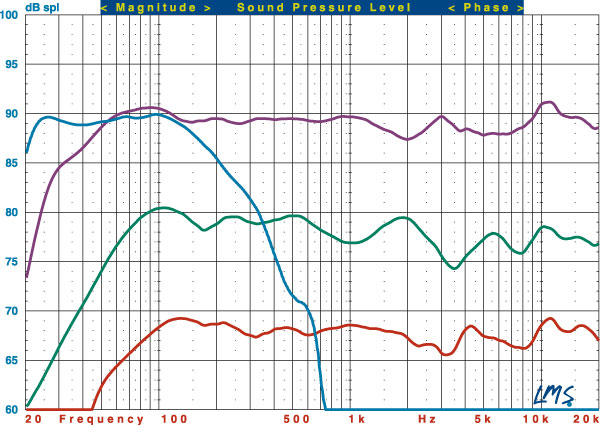I found Sound & Vision's test bench measurements of the Performa3 lineup, in this case the larger F208, and it seems clear to me that Revel intended all of the Performa3 speakers to be used in HT installations and always set to "Small" with a good subwoofer.

This graph shows the quasi-anechoic (employing close-miking of all woofers) frequency response of the F208 L/R (purple trace), B112 subwoofer (blue trace), C208 center channel (green trace), and M106 surround (red trace). All passive loudspeakers were measured with grilles at a distance of 1 meter with a 2.83-volt input and scaled for display purposes.
Read more at https://www.soundandvision.com/cont...speaker-system-test-bench#HV1qfwYIeXTEzkVH.99

This graph shows the quasi-anechoic (employing close-miking of all woofers) frequency response of the F208 L/R (purple trace), B112 subwoofer (blue trace), C208 center channel (green trace), and M106 surround (red trace). All passive loudspeakers were measured with grilles at a distance of 1 meter with a 2.83-volt input and scaled for display purposes.
Read more at https://www.soundandvision.com/cont...speaker-system-test-bench#HV1qfwYIeXTEzkVH.99
